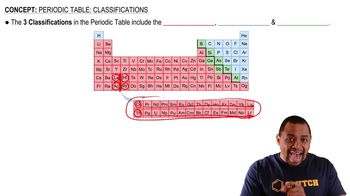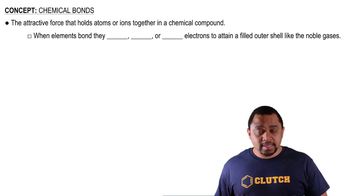Here are the essential concepts you must grasp in order to answer the question correctly.
Valence Electrons
Valence electrons are the outermost electrons of an atom and are crucial in determining how an atom interacts with others. They are involved in forming chemical bonds, as they can be shared or transferred between atoms during reactions. The number of valence electrons varies among elements and is key to understanding an element's reactivity and placement in the periodic table.
Recommended video:
Transition Metals Valence Electrons
Periodic Table
The periodic table organizes elements based on their atomic number and electron configuration, which directly relates to the number of valence electrons. Elements in the same group (column) typically have the same number of valence electrons, leading to similar chemical properties. Understanding the periodic table helps predict how different elements will bond and react with one another.
Recommended video:
Periodic Table Classifications
Chemical Bonding
Chemical bonding refers to the forces that hold atoms together in compounds. Valence electrons play a pivotal role in this process, as they are the electrons that participate in bond formation, whether through ionic or covalent means. A solid grasp of chemical bonding is essential for predicting the behavior of substances in chemical reactions.
Recommended video:

 Verified step by step guidance
Verified step by step guidance


